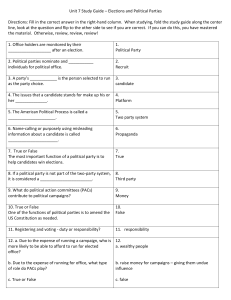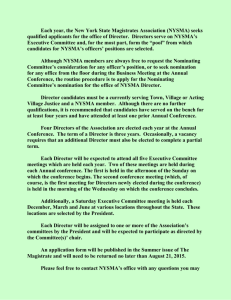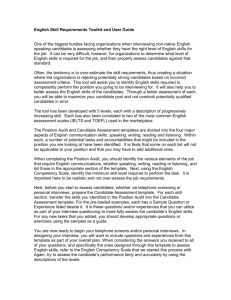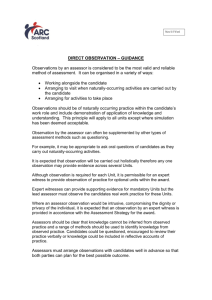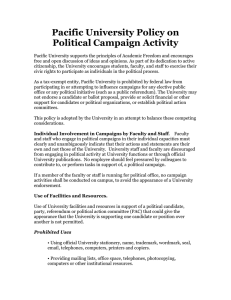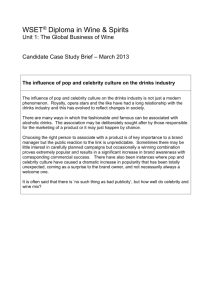Essay Questions
advertisement
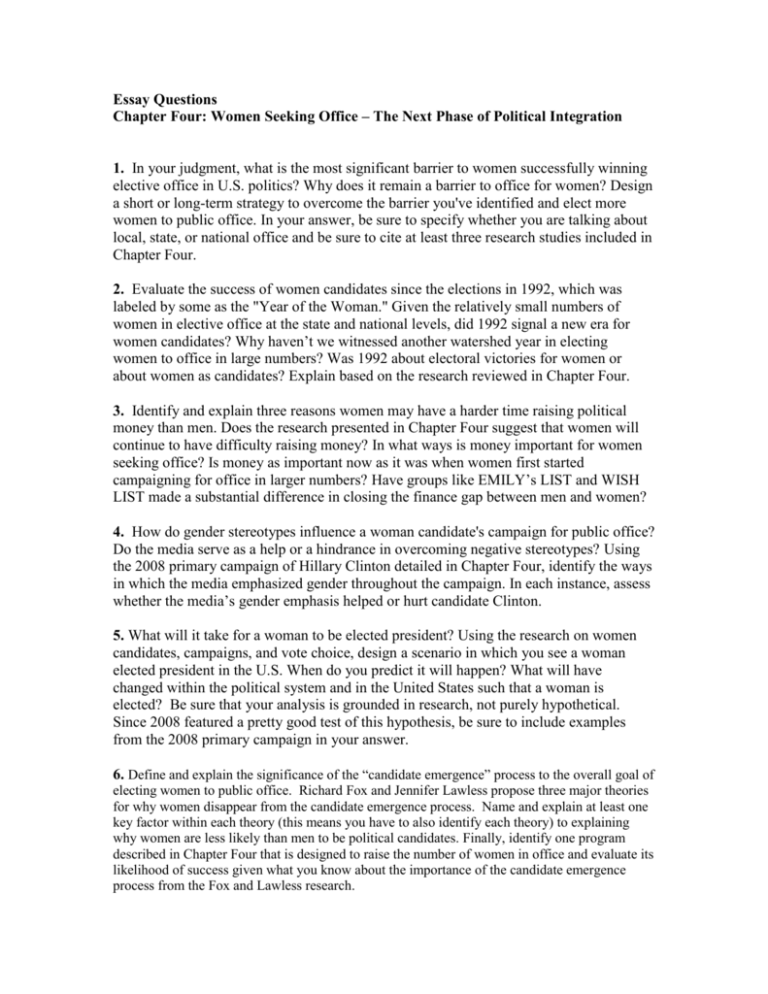
Essay Questions Chapter Four: Women Seeking Office – The Next Phase of Political Integration 1. In your judgment, what is the most significant barrier to women successfully winning elective office in U.S. politics? Why does it remain a barrier to office for women? Design a short or long-term strategy to overcome the barrier you've identified and elect more women to public office. In your answer, be sure to specify whether you are talking about local, state, or national office and be sure to cite at least three research studies included in Chapter Four. 2. Evaluate the success of women candidates since the elections in 1992, which was labeled by some as the "Year of the Woman." Given the relatively small numbers of women in elective office at the state and national levels, did 1992 signal a new era for women candidates? Why haven’t we witnessed another watershed year in electing women to office in large numbers? Was 1992 about electoral victories for women or about women as candidates? Explain based on the research reviewed in Chapter Four. 3. Identify and explain three reasons women may have a harder time raising political money than men. Does the research presented in Chapter Four suggest that women will continue to have difficulty raising money? In what ways is money important for women seeking office? Is money as important now as it was when women first started campaigning for office in larger numbers? Have groups like EMILY’s LIST and WISH LIST made a substantial difference in closing the finance gap between men and women? 4. How do gender stereotypes influence a woman candidate's campaign for public office? Do the media serve as a help or a hindrance in overcoming negative stereotypes? Using the 2008 primary campaign of Hillary Clinton detailed in Chapter Four, identify the ways in which the media emphasized gender throughout the campaign. In each instance, assess whether the media’s gender emphasis helped or hurt candidate Clinton. 5. What will it take for a woman to be elected president? Using the research on women candidates, campaigns, and vote choice, design a scenario in which you see a woman elected president in the U.S. When do you predict it will happen? What will have changed within the political system and in the United States such that a woman is elected? Be sure that your analysis is grounded in research, not purely hypothetical. Since 2008 featured a pretty good test of this hypothesis, be sure to include examples from the 2008 primary campaign in your answer. 6. Define and explain the significance of the “candidate emergence” process to the overall goal of electing women to public office. Richard Fox and Jennifer Lawless propose three major theories for why women disappear from the candidate emergence process. Name and explain at least one key factor within each theory (this means you have to also identify each theory) to explaining why women are less likely than men to be political candidates. Finally, identify one program described in Chapter Four that is designed to raise the number of women in office and evaluate its likelihood of success given what you know about the importance of the candidate emergence process from the Fox and Lawless research. 7. Political parties serve a variety of functions in American politics, but they play a major role in recruiting candidates to run for public office. Some have argued that political parties serve as political gatekeepers and introduce a barrier to women’s’ candidacies. Evaluate the evidence that parties are a help or a hindrance to women’s electoral success. Be sure to note where and how it works differently for Republicans and Democrats.


